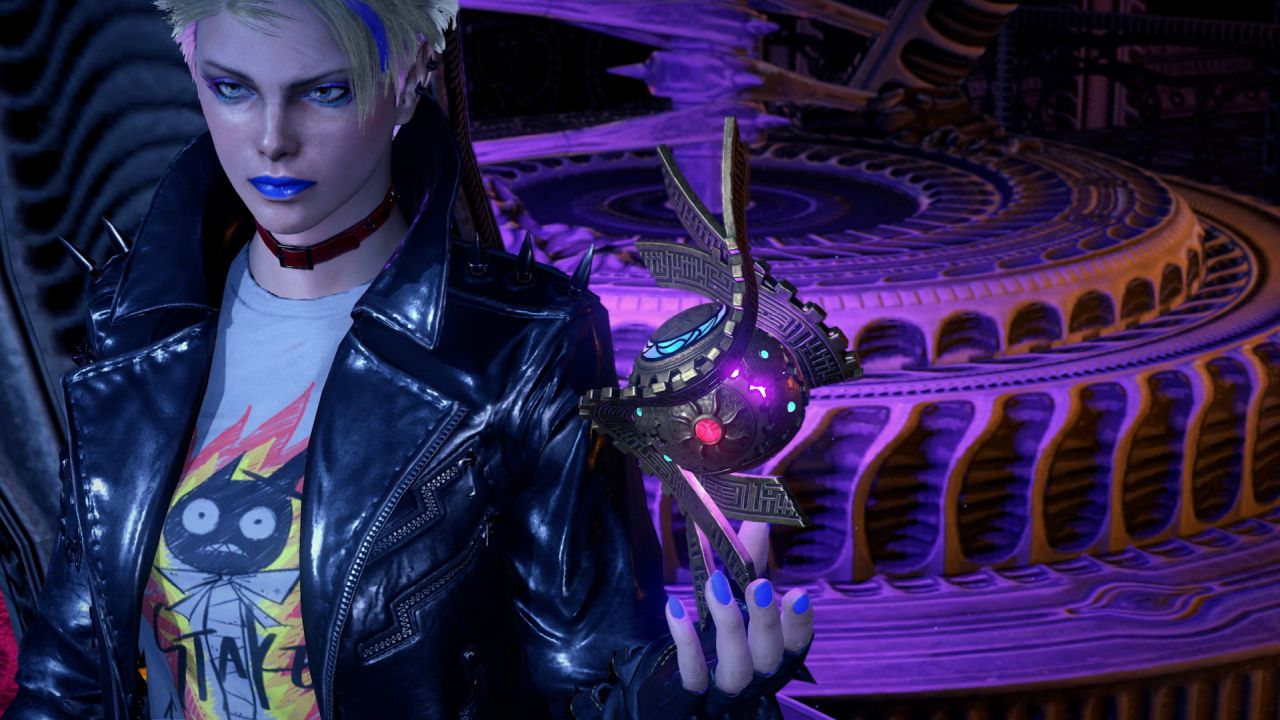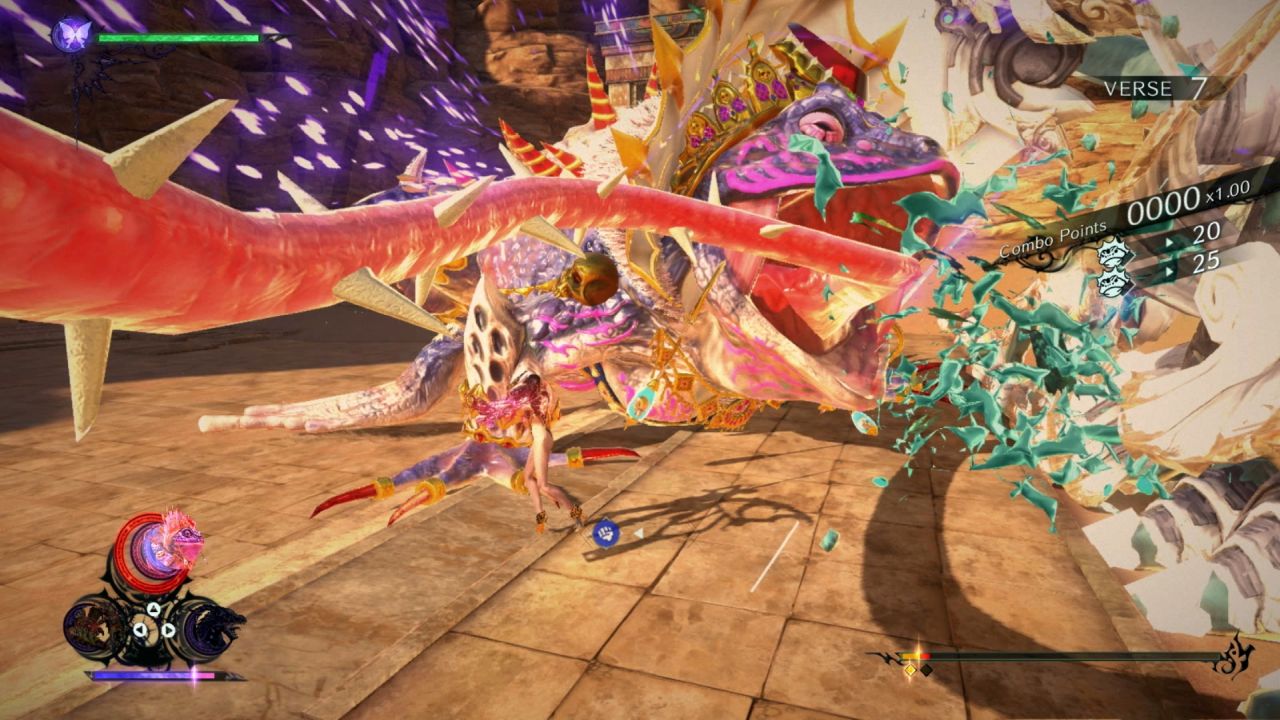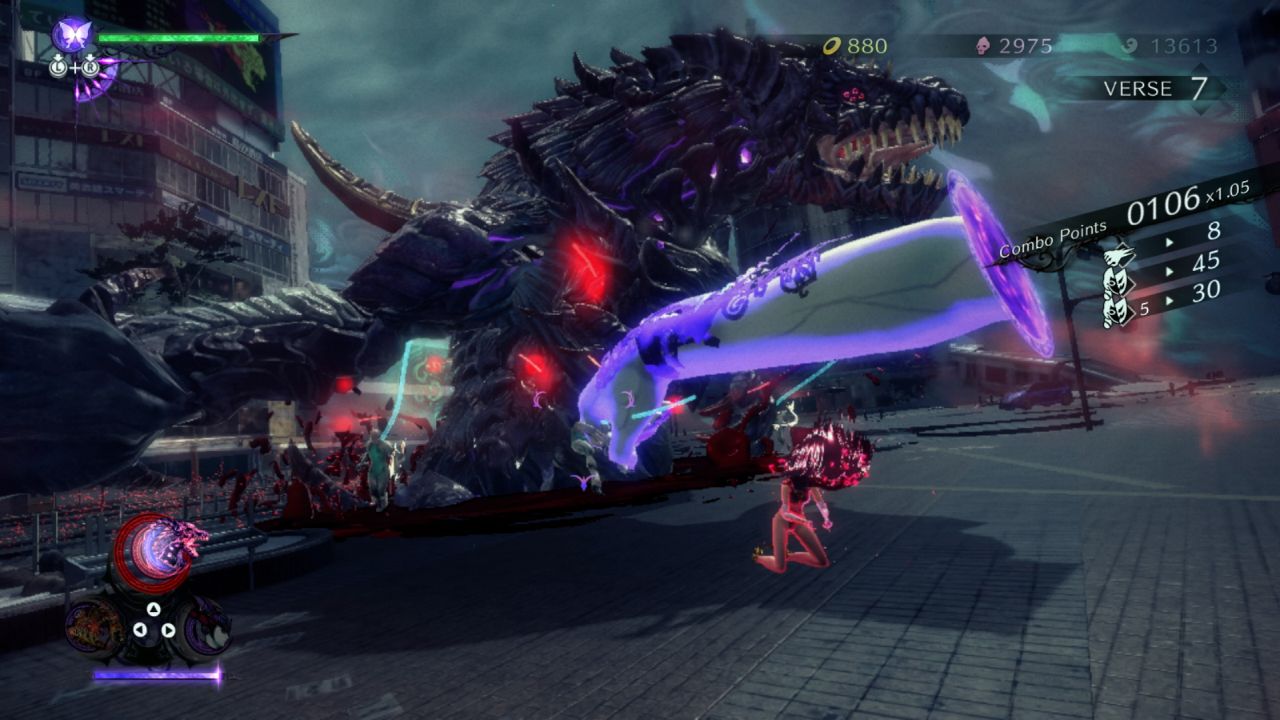Bayonetta 3 Review
Third time, not quite as charming
Some entertainment properties struggle to survive and continue their run, despite gathering critical acclaim and a hardcore fan base. From shows like Firefly and Enlisted to games such as Bully and Grim Fandango, sometimes the general audience interest just isn't there. Such was also the case with 2009's Bayonetta, an original and over-the-top character action game that was a hit with critics and some fans, but didn't gather enough sales for publisher SEGA to consider a sequel. Interestingly, Nintendo stepped up, and helped developer Platinum Games create a worthy sequel in 2014 that would become a Wii U exclusive. Almost a decade later, the series has returned with Bayonetta 3 on the Nintendo Switch, and while the core of the experience still seemed to have some life it in, a number of concessions and design choices prevent it from soaring to the same heights.

One of the best things about this series has been the titular character herself, Bayonetta (aka Cereza). As established by the previous games, she is an Umbra Witch, constantly in battle with the forces of Paradiso and Inferno realms, in order to protect the World of Chaos (Earth).The third chapter doesn't include any kind of recap of the previous games, so newcomers will have to seek out the extensive lore information online. This time around, Bayonetta's shopping afternoon is interrupted by a new enemy force called Homunculi, who are attacking New York. These enemies are not from the realms that she has battled before, and instead appear humanoid. After halting the attack – at the expense of the city being reduced to rubble – she meets with Rodin, Jeanne, and a newcomer Viola. Viola tells them that this attack came from an alternate universe called the Alphaverse, where a mysterious entity called a Singularity has apparently decided to invade and take over all other universes. Viola and Bayonetta will have to visit other universes and collect Chaos Gears, while Jeanne will stay and try to find Dr. Sigurd who can help the group use those Gears and stop the attacks.
The series has always featured a somewhat complicated lore that doesn't always get properly explained during the action, but the gist of it is easy to follow. It's the same case with the third chapter, that players can simply look at as a riff on the multiverse themes that have been unfolding elsewhere in media in recent years. Bayonetta and Viola will travel to different universes from the central hub island, and each universe offers a different time era and visual style, creating a scope that's far larger than the previous games. From a collapsing modern day New York to feudal Japan, there is good variety in the settings. In each new locale, Bayonetta will meet the local versions of herself and other characters, which is a neat idea but it's over too quickly. In all scenarios, the local Bayonettas are close to or will soon perish, so we don't even get to know them. Their sole purpose is to pass along a weapon to our main Bayonetta to use; it's also strange that she remains rather emotionally unaffected by witnessing the other versions of herself perish.
This seeming distance is just the start of the unfortunate writing problems that the game suffers from. The storytelling is minimal and doesn't really make you care about what is happening; the game is full of cutscenes, but they are stylish action showpieces, and frequently have little to no dialogue or exposition. Bayonetta still has an amazing attitude that is both magnetic and sex-infused, confident and brash, and remains one of the most memorable characters in modern gaming that loves to start dancing for no reason at all and sheds her clothing for super attacks. On the other hand, the newly introduced Viola is a walking cliché – the young, punk-rock styled woman that constantly switches between being loud and being the comic relief. It may remind fans of the direction that the Devil May Cry franchise recently took. But while it usually takes a couple of decades and a lot more entries for a series to consider introducing an alternative character to the main hero, Bayonetta 3 accelerates this timeline. It also results in one of the most cheaply written endings in recent memory, that will feel even worse for fans who don't take a liking to Viola.

The gameplay also features a much larger scope. It's still incredibly over the top, bordering on anime level of absolute silliness that you will get to observe. And yet it still works, and blasting an enemy into outer space, only to follow and continue the fight on the Moon, is par for the course. The game throws a ton of different ideas into its set pieces, with a variety of mechanics and combat scenarios. You could be doing an on-rails shooting section, or sliding down collapsing skyscrapers on your summoned beast. There are depictions of huge Godzilla-like battles, as well as a sequence where you blow bubbles to trap an enemy. The creativity is rather immense, and always very extravagant. There are plenty of well-choreographed cutscenes too, depicting some very bombastic action – so much so, that you actually wish at least some of it was interactive, even in the form of simple QTEs, for a more satisfying player engagement.
The developers clearly threw everything they had at the game, with a myriad of ideas that don't always work. For example, there are optional sections where Bayonetta can rewind time for a short period in order to grab some collectibles and currency. For Jeanne's mandatory story sections, you actually control her in 2D, stealth-focused levels that grow a bit repetitive, and have a lengthy unskippable intro sequence. The majority of the game is a creative feast, but not all of it works.
So many set pieces and gimmicky minigames also mean there is less traditional fighting. The trademark easy-to-learn combo system that combines ranged, kick, and punch attacks returns without skipping a beat, and is still enjoyable to execute. You can button mash your way through the game on normal difficulty, or try to go for the complex combos on the harder setting. Bayonetta still activates her Witch Time slowdown when you dodge an attack with good timing, letting you get some free hits in. Viola meanwhile uses a sword, and her time slowing comes from well-timed parries of attacks instead. Both characters play well and not much of an adjustment is required when the story switches between them.
The increase in scope of combat does have its drawbacks though, due to the fact that you will be facing foes of towering size in almost every encounter, which leads to much of the game feeling like you are hacking at ankles and playing Monster Hunter. Big foes may telegraph their attacks better, but also cause many camera issues as you can't really tell what is happening. It's difficult to get into a rhythm, and with a lack of regular-sized foes, Bayonetta 3 just doesn't have quite the same satisfying combat as its predecessors.

A major new feature to combat, that looks to address the giant enemies you will encounter, is the ability to summon Demon Slaves. These huge monsters burst out of the ground and can deliver a few massive hits, while the magic gauge runs down. In the case of Bayonetta, she can summon her big dragon Gomorrah, or Madama Butterfly and issue attacks directly; but doing so leaves Bayonetta fixed in place, so there is strategy to when and how to summon. Players unlock new summons over the course of the game, and can select which ones they want equipped. Viola, meanwhile, has a funky creature named Cheshire as her summon, who is a part of her sword; summoning it leaves her mobile, but only able to use fists and kicks. Players will likely resort to summons frequently during combat, as it helps level the size of the playing field and deal more damage quickly – but it somewhat takes the focus away from the characters and the traditional combat. You will also get a number of oversized weapons to use over the course of the game, that can also combo with the demons and regular attacks.
Another downside to the big new battles and set pieces is the quality of the presentation. The franchise has always had a goal of targeting 60 fps, but at this scale, the Nintendo Switch is simply unable to keep pace. The framerate, while occasionally getting to 60, is more frequently very inconsistent, dipping all over the place. What's worse, the game's visuals suffer immensely. While close-ups of characters and some of the staged shots appear decent, the majority of the game looks like it's an early Xbox 360 title. The quality of the textures and visual effects is often extremely pixelated, draw distances are terrible, and while the game attempts (and often fails) to stay at 1080p when the Switch is docked, in handheld mode the visuals slip into 480p territory. It's all for the sake of the high framerate, but it does more harm than good for the overall impressions of the game. The art department tries to save some of the visual fidelity, but it's tough to see the beauty of assets rendered so low-res.
An action game of this type is also not a good match for the Switch's Joy-Cons. If you're previously played Bayonetta 1 on another console family, and even with Bayonetta 2 on the Wii U's better sized gamepad, fighting using the Joy-Cons is most often a chore. The tiny size of the buttons and triggers is a constant annoyance, and there's a certain lack of satisfaction when you are faced with gigantic foes, and have to use inputs of this size. A Pro Controller is definitely recommended to use for this title.
The audio design is also very hit or miss. A curated soundtrack is quite good and features a number of tracks that fit the action well, with many vocalized songs that may remind players of the style from Nier: Automata. The voice actors are less consistent – due to some real world contract drama, Bayonetta's actress has been replaced for this entry, with an experienced Jennifer Hale taking over and doing an OK job of matching Hellena Taylor from the previous games. Still, she does not get a lot of lines, and some of the spotlight falls to Viola, whose predictable high-pitched clumsiness may grate some players. The audio effects are also quite crude at times, with the sound of combat being much better than the sounds of idle world exploration, footsteps, and the effects of picking up in-game currency.

Even if the game was nice to look at, the level design leaves much to be desired. Between individual fight rooms known as Verses, you'll trek across some crudely designed terrain that often lacks any geometric detail or props, and into the next arena fight. There are some collectibles to find, challenge fights to attempt, and currency to gather between the combat sections, but on the whole the environmental traversal is not a worthwhile gameplay experience. Platforming never quite feels comfortable.
Bayonetta as a character, and as a series, has already cemented her legacy in the action-game genre, even if the third chapter is a misstep. Her confidence and overt sexuality were able to overcome the inherent criticisms of a character such as this. She took control of what she stood for, but the finale tries to undo some of that. The hugely expanded scope of the game means there are plenty of head-spinning set pieces, but it also leaves the traditional combat behind, as huge enemies create a constant need to summon your equally sized demons. Perhaps worst of all, the game's admirable, but at this point misguided, drive to deliver 60fps performance is no longer possible on the Switch, with much of the game looking extremely dated. If this is the last we see of Bayonetta for a while – whether due to creative choices, or needing another number of years to fund the next chapter – then it's a game that certainly goes out with a huge bang, though perhaps one that will feel least familiar to long time series fans.
 Comments
Comments




















